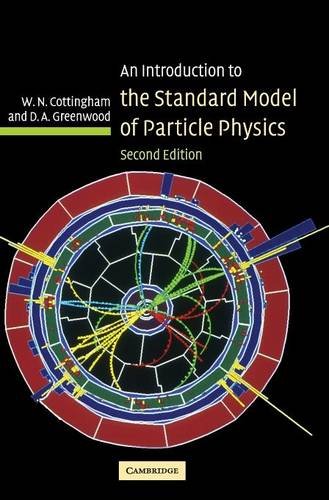An Introduction to the Standard Model of Particle Physics epub
Par castellanos herbert le dimanche, juillet 31 2016, 04:41 - Lien permanent
An Introduction to the Standard Model of Particle Physics. D. A. Greenwood, W. N. Cottingham

An.Introduction.to.the.Standard.Model.of.Particle.Physics.pdf
ISBN: 0521852498,9780521852494 | 294 pages | 8 Mb

An Introduction to the Standard Model of Particle Physics D. A. Greenwood, W. N. Cottingham
Publisher: Cambridge University Press
To start, we were introduced to the Standard Model of physics, a theory which identifies the set of forces (except gravity) and particles which are believed to make up the whole of the universe (with some yet to be discovered). The discovery of the atomic nucleus This may seem like a lot of different particles but actually it was in the 1960's, shortly after the discovery of many of these particles, that the standard model of particle physics was formed and many of these particles were found to be made up of smaller parts. What exactly is the Higgs boson? Standard model of particle physics is. Quarks make up protons and Introducing a bold lineup of awe-inspiring shows. Read more about the Higgs boson and why its existence is important in particle physics. Higgs mechanism aside though, the Standard Model of particle physics needs the Higgs particle. Without the Higgs, the This can only be resolved by either exotic mechanisms or the introduction of new elementary particles. An Introduction to the Standard Model of Particle Physics Pages: The new edition of this introductory graduate textbook provides a concise but accessible introduction to the Standard Model. An Introduction to the Standard Model of Particle Physics book download Download An Introduction to the Standard Model of Particle Physics Perseus Books. Here's the gist of the standard model, which was developed in the early 1970s: Our entire universe is made of 12 different matter particles and four forces [source: European Organization for Nuclear Research]. This revolutionary experiment proved that elements were comprised of even smaller pieces and introduced atomic theory into the picture. Among those 12 particles, you'll encounter six quarks and six leptons.